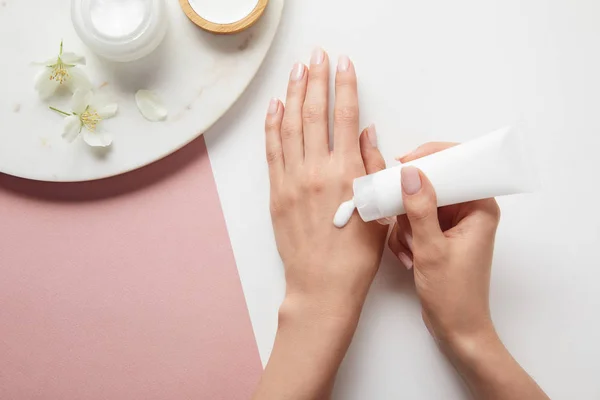“How To Get Original Skin Color Back After Sun Exposure or Hyperpigmentation” Embarking on the journey to reclaim your natural skin tone feels like a rediscovery of your original self, a return to your roots after years of battling the sun’s harsh rays, pollution, or perhaps inconsistent care.
Our skin, a mirror reflecting our health and habits, often begs for rejuvenation. This guide is your first step towards reviving your skin’s authentic color, turning the page from temporary fixes to embracing a holistic approach that nurtures, protects, and restores your skin’s inherent vibrancy.
Here, we explore scientifically-backed, gentle strategies designed to renew your complexion and celebrate its truest form.

How To Get Original Skin Color Back
How to Restore Your Natural Skin Tone
To regain your natural skin color, focus on protecting your skin from sun damage, maintaining proper hydration, and adopting a balanced diet.
Using gentle skincare products and regular exfoliation can also help remove dark spots and discoloration, restoring your original skin tone. For persistent skin tone issues, consulting a dermatologist can provide tailored solutions.
Understanding Skin Discoloration
Skin discoloration can be caused by a variety of factors including sun exposure, pollution, hormonal imbalances, and skin injuries. Understanding the underlying cause is crucial in determining the most effective treatment. People often use terms like “hyperpigmentation,” “sun spots,” or “uneven skin tone” when discussing these issues.
Effective Sun Protection
Sun protection is essential in preventing further darkening of the skin. Using a broad-spectrum sunscreen with at least SPF 30 can shield the skin from harmful UVA and UVB rays. Wearing protective clothing and seeking shade during peak sun hours are also effective strategies. Remember, sun damage is one of the leading causes of skin discoloration.
Hydration and Nutrition
Hydrating your skin both internally and externally is vital. Drink plenty of water daily and use hydrating skincare products to maintain skin elasticity and brightness. Foods rich in antioxidants, like berries, nuts, and green leafy vegetables, support skin health and can help prevent discoloration.
Gentle Skin Care Routine
Opt for gentle, non-irritating skincare products to avoid exacerbating skin discoloration. Products containing natural ingredients like aloe vera, vitamin C, and licorice root extract can be beneficial. Regular exfoliation helps to remove dead skin cells and rejuvenate the skin, potentially lightening dark patches.
Professional Treatments
For those struggling with significant skin discoloration, professional treatments like chemical peels, microdermabrasion, or laser therapy may be effective. These procedures should be performed by licensed professionals. They work by removing the top layers of skin, which can help reduce the appearance of discoloration.
Regular Dermatologist Visits
Regular check-ups with a dermatologist can help you track your progress and make necessary adjustments to your skincare regimen. This is particularly important for individuals with severe discoloration issues or those whose skin does not respond to basic interventions.
By following these guidelines and incorporating protective, hydrating, and corrective measures into your daily skincare routine, you can work towards restoring your natural skin tone effectively.

FAQs
What causes skin color changes?
Skin color can change due to various factors including sun exposure, hormonal changes, skin disorders, certain medications, and lifestyle habits. Overexposure to the sun is one of the most common causes of skin darkening due to the increase in melanin production that it triggers.
Can my skin color return to its original tone after tanning?
Yes, skin color can gradually return to its original tone once the factors causing the darkening (like sun exposure) are minimized. Ensuring adequate protection against UV rays and caring for your skin through proper hydration and nutrition can help.
What skincare routines can help restore my original skin color?
To help restore your skin color, adopt a skincare routine that includes:
Using a broad-spectrum sunscreen daily.
Cleansing the skin gently but thoroughly.
Exfoliating regularly to remove dead skin cells.
Applying topical antioxidants like vitamin C.
Keeping the skin hydrated with moisturizers.
Are there any treatments available to speed up the process of regaining my original skin color?
Several treatments can help, including chemical peels, laser therapy, and microdermabrasion. These treatments should be done under the supervision of a dermatologist to avoid adverse effects and ensure they are suitable for your skin type.
How long does it usually take to regain my original skin tone?
The time it takes to regain your original skin tone can vary widely depending on the cause of the color change, the extent of the change, and your skin type. It might take a few months to a year for skin tone to stabilize, especially if it was altered by prolonged exposure to the sun.
Can natural remedies be effective in restoring original skin color?
Natural remedies, such as aloe vera, turmeric masks, and lemon juice, are often touted for their skin-lightening properties. However, their effectiveness is not guaranteed, and they can sometimes cause skin irritation or allergic reactions. It’s best to use them cautiously and consult a dermatologist before starting any home treatment.
What dietary changes can support skin health and help restore original skin color?
A diet rich in antioxidants, vitamins, and minerals can support skin health. Include plenty of fruits, vegetables, whole grains, and lean proteins in your diet. Foods rich in vitamins C, E, and A, as well as omega-3 fatty acids, are particularly beneficial for skin health.
Are there any risks involved in trying to restore my skin color?
Yes, attempting to alter your skin color through unsupervised methods or harsh chemicals can lead to skin damage, irritation, and even long-term health issues like skin cancer. Always seek professional advice before starting any skin treatment.
How can I protect my skin from further color changes?
Protecting your skin involves minimizing sun exposure by wearing protective clothing and using sunscreen, avoiding smoking, staying hydrated, and maintaining a healthy diet. Regularly moisturizing your skin and avoiding harsh skin care products also helps.
When should I see a dermatologist about changes in my skin color?
You should consult a dermatologist if:
The skin color changes are sudden or severe.
There is irritation, pain, or any other discomfort.
Over-the-counter products do not improve the skin’s condition.
You wish to explore clinical treatments for skin color restoration.
conclusion
To restore your original skin color, adopting a holistic approach that combines healthy lifestyle choices with effective skincare routines is essential. Prioritize protecting your skin from sun exposure by using sunscreen, wearing protective clothing, and seeking shade during peak hours.
Incorporate a balanced diet rich in antioxidants and stay hydrated to support skin health from the inside. Regularly cleanse and moisturize your skin to maintain its natural barrier, and consider gentle exfoliation to remove dead skin cells and promote cell renewal.
For persistent skin tone issues, consulting a dermatologist can provide tailored treatments and advice. Remember, patience and consistency are key, as skin restoration is a gradual process that relies on a commitment to nurturing and protecting your skin.

